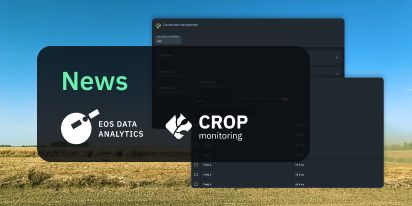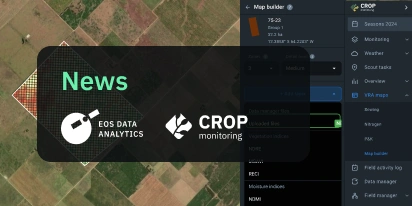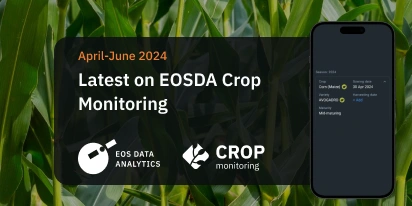How To Grow Sorghum (Sorgo) And Get Increased Yields
Sorgo (Sorghum) is an annual or perennial cereal plant. Its homeland is considered to be the regions of East Africa where the plant was grown in the 4th century BC. In terms of crop production, sorghum plant is in 5th place in the world. Such high popularity of sorghum is due to its little requirements while growing, large yields, and many useful properties that can be used in various industries. A number of sorghum plant varieties are grown as a cultivated plant for grain, as an industrial crop, and as fodder. Besides, the cultivation of this crop does not require special machinery and equipment.
More than 90% of the world’s sorghum production is carried out in the developing countries of Asia and Africa: Nigeria (6.9 MMT), Ethiopia (5.0 MMT) and Mexico (5.0 MMT), India (4.5 MMT), and China (3.6 MMT). However, the leadership is by the U.S. with an annual output of around 9 million metric tonnes.
In the U.S. sorghum is traditionally grown in the so-called Sorghum Belt, which lies from South Dakota to Southern Texas. Here are the sizes of the U.S. sorghum planted areas by states:
- Kansas – 2.8 million acres
- Texas – 1.55 million acres
- Colorado – 355,000 acres
- Oklahoma – 300,000 acres
- South Dakota – 260,000 acres
Sorghum production in different countries highly depends on climate, especially rainfall. That is because farmers usually plant drought-resistant sorghum instead of maize, if there is low precipitation.
Use EOSDA Crop Monitoring in your country to manage your sorghum field easily and remotely.
Sorghum easily adapts to the soil and climatic conditions. That is why it has a wide distribution area – from tropical, desert and semi-desert climatic zones to temperate and humid.
Sorghum seeds begin to germinate at 10 °C, and the optimum temperature for seed germination, growth and development is within 25-30 °C. Excessively high temperatures, especially in the period from germination to tillering, when a powerful root system has not yet formed, have a negative effect on sorghum. During the panicle development, the crop tolerates temperatures up to 40-45 °C, which makes it a heat-tolerant and drought-resistant crop. But sorghum is sensitive to low temperatures and frosts, especially in the flowering phase. The plants die at -2°C.
Sorghum tolerates air and soil droughts, dry winds and high temperatures much more easily than other cultivated plants. As a tropical plant, in the process of evolution, it has developed great adaptability to the lack of moisture. In terms of the degree of drought resistance and heat resistance, it is one of the outstanding plants due to its special anatomical and physiological structure that is not comparable to any other agricultural crop.
Sorghum soil type requirements
Sorghum can grow on fertile loams, light sandy and well-aerated clay soils that are clean from weeds. Besides, due to a strong root system, it can produce good yields for a number of years on soil that would be poor and depleted for other crops. Sorghum does not tolerate cold, waterlogged lands, and grows poorly on acidic soils.
A great advantage among sorghum growing conditions is its ability to grow on saline soils. The plant is able to grow and develop normally when the salt concentration in the soil is twice as high as required for corn.
Here are the main sorghum growth stages.
0. Germination
At this stage, the coleoptile leaf of the plant breaks through the soil surface. The stage lasts from 3 to 14 days, depending on the soil moisture, temperature, and seeding depth.
1. Leaf development
At this stage, the plant is 7 to 9 inches tall and starts developing leaves. The stage lasts until at least 5 leaves have developed.
2. Tillering
This is the period of rapid growth of a plant. At this stage, the bottom leaves fall off, and tillers appear at the base of the plant.
3. Stem elongation
At this sorghum growth stage, the last leaf of the plant emerges. Stem elongation manifests itself in the development of visibly extended internodes. It lasts until 9 of those are visible.
4. Heading
At the heading stage, the panicle emerges from the flag leaf sheath and becomes visible. The stage lasts until the plant progresses to mid-bloom when the panicle completely emerges from the leaf sheath.
5. Flowering
Flowering or blooming is the most critical of sorghum growth stages. At this stage, the peduncle is still elongating, taking 4 – 9 days for a single panicle to complete the flowering process.
6. Development of fruit
At this stage, the grain begins forming, quickly expanding and containing a milky fluid. The milk substage usually lasts 7 – 10 days. The next substage is soft dough, when the grain no longer contains a milky liquid and starts reaching its final weight. This substage lasts until the grain is as hard that it can no longer be crushed with the thumb and index finger.
7. Ripening
At this stage, grain has reached 75 % of its final dry weight and the seed coat has turned its final color (white, bronze or red). The total moisture content of the plant is at its lowest, and water stress during this time tends to promote lodging.
8. Senescence
This is the last growth stage of sorghum, when grain has achieved its maximum dry weight. Dark spots or a black layer on the bottom of the kernel are visible.
The first step in land preparation for planting sorghum is to carry out deep fall plowing, depending on the thickness of the arable layer of the soil to a depth of 25 – 30 cm. Keep in mind that the traditional system of soil preparation for sorghum is quite justified. All activities carried out in the field intended for sowing sorghum should be aimed at killing weeds, accumulating moisture, and leveling out the soil. The most common soil cultivation system for sorghum is the early plowing, which provides weed destruction, leveling the soil so that in spring, before sowing sorghum on the prepared soil, enough moisture is retained in the upper layers.
The optimal sorghum sowing time is the period when the average daily temperature at a depth of 10 cm reaches 14 – 16 °C for grain sorghum, and 13 – 15 ° C for sugar sorghum and sorghum hybrids. Based on this, sorghum planting dates usually fall on the last five days of April – the first half of May.
When sowing early, the seedlings are very thinned and overgrown with weeds. That is why sowing sorghum earlier is not preferable. At a soil temperature of 14 – 16 °C, seedlings appear on the 10 – 12th day, and when the temperature rises to 25 – 28 °C – on the 5 – 6th day after sowing.
EOSDA Crop Monitoring can help assess when your field is most prepared for sowing sorghum.
Before planting sorghum, it’s critical to prepare the seeds for sowing. All sorghum seeds, especially those with reduced germination, are subjected to solar or air-thermal heating in spring, which is carried out on open sunny areas for 5-9 days. In case of bad weather during the pre-sowing period, solar heating can be replaced with air-thermal heating, using conventional dryers with a soft mode for this purpose. A month before sowing, sorghum seeds must be treated against mold fungi, bacterial diseases, smut, as well as pests in the soil.
Sorghum is a small-seeded crop, which makes it impossible to plant its seeds deeply, because the duration of the sowing-germination period increases, field germination decreases, and the plants appear weakened and unstable to changing weather conditions. However, consider that sorghum planting depth depends on the purpose of growing and the biological properties of a particular variety.
The optimal planting depth of grain sorghum, silage, and grassy sorghum is considered to be 5 – 7 cm. When the top layer of the soil dries up, it is possible to sow sorghum up to 10 – 12 cm. Sowing sorghum to a depth of 4 – 5 cm is allowed in case when a heavy rain (up to 25 – 30 mm) falls before the sowing itself and there is a reliable supply of moisture. On irrigated land, this sowing depth is most acceptable.
Sorghum plant spacing between rows should be from 45 to 70 cm. The optimal plant density of sorghum hybrids is 300 – 400 thousand plants per hectare in a wide-row sowing method of 70 and 45 cm.
Identify productivity zones of your field in EOSDA Crop Monitoring to distribute seeds across the field rationally.
Although sorghum is not demanding in terms of soil fertility and the ability to extract nutrients, it is responsive to the application of the following organic and mineral fertilizers.
Nitrogen
Nitrogen promotes intensive plant growth and increases the entire vegetative mass of sorghum. The highest yields are obtained with the application of high doses of nitrogen.
Phosphorus
This fertilizer accelerates seed germination. Doses of phosphorus applied for sorghum are usually lower than that of nitrogen by 1.5 – 2 times. It is advisable to apply 10 – 15 kg / ha on average.
Potassium
This fertilizer has a positive effect on the accumulation of starch and sugar in sorghum grain. In combination with other fertilizers, it is necessary to apply 40 – 60 kg / ha of potassium.
However, phosphorus and nitrogen fertilizers, when applied together with seeds, negatively affect the germination of seeds. That is why it is better to apply fertilizers before sowing the seeds and deeper.
Grain sorghum fertilizer requirements also include organic fertilizers and microelements. The most effective are manganese, zinc, and boron. They promote better maturation of seeds, which leads to an increase in their germination and yield.
Identify productivity zones of your field in EOSDA Crop Monitoring to distribute fertilizers across the field rationally.
Although sorghum water needs are not high, it is very responsive to additional moisture, especially before tillering. Irrigation not only increases yields but also improves the quality of grain. Sorghum harvest depends on the timing and amount of irrigation.
When growing in dry years, sorghum irrigation requirements are 6 – 7 waterings, in medium-dry years – 4 – 5, and in wet years – 2 – 3 waterings. The first watering is carried out during tillering at a rate of 350 – 400 m3 / ha, and the second watering is needed during booting. The third and fourth waterings are carried out after flowering, and the fifth – during the grain filling phase. In humid and moderately humid years, 2 – 3 waterings are necessary: in the phase of booting, development of a panicle, and grain formation. The irrigation rate for sprinkler irrigation in the first half of plant development is 400-500 m3 / ha, and in the milky-wax ripeness stage – 600 – 650 m3 / ha. Irrigation becomes important during critical periods of plant growth and development. For sorghum, they are booting, panicle development, flowering, and grain formation. Sorghum water regime should be timed to these periods to ensure the highest efficiency.
Here are the most common pests affecting sorghum and the ways to protect the crop from them:
Wheat aphid
This pest sucks out the liquid from the plant’s leaves and disrupts all the vital functions of a plant: photosynthesis, carbohydrate metabolism, protein synthesis, etc. Wet and warm weather favors the development of aphids. At low relative humidity, the development of aphids is delayed and its harmfulness is reduced.
Protection measures:
- Spraying plants with organophosphorus pesticides in the early stages of development
- Selection of resistant varieties and hybrids
Owlet moths
The caterpillars of this pest damage the leaves and stems of a plant until it dies out.
Protection measures:
- Removal of crop residues from the field
- Deep plowing
- Weed control
- Crop rotation
Click beetles
The larvae of this pest gnaw on young shoots and feed on sprouted seeds, which severely reduces plant germination.
Protection measures:
- Weed control
- Adding ammonia water to the soil
- Seed treatment
- Application of granular insecticides
Corn borer
At first, the caterpillars of this pest feed on leaves, later penetrating into the stem, where they spend their entire life, feeding on sap until the stem breaks off along with the panicle.
Protection measures:
- Spraying crops with organophosphorus pesticides
EOSDA Crop Monitoring can help assess the health of your crops to organize treatment when needed.
Here is the list of sorghum diseases and the ways to protect the crop from them:
Seed fungi
The surface of the seeds infected with this disease darkens from the spores of the fungus. This usually occurs in cold, wet weather.
Protection measures:
- Careful adjustment of harvesters to prevent seed damage
- Immediate post-harvest cleaning and drying of seeds to 12% moisture content
- Sowing in soil warmed than 14 – 16 ° C
- Seed treatment with fungicides
Bacterial leaf spot
The signs of this sorghum disease appear on the leaves of a plant in the form of watery and red elongated spots on the lower surface of the leaf. The disease usually occurs in wet years.
Protection measures:
- Deep plowing
- Right sowing dates
- Seed treatment
Biotrophic fungus
Infected plants develop cone-shaped swellings on the panicles affected by smut. When ripe, they crack and spray the spores of the fungus.
Protection measures:
- Selection of disease-free seeds for sowing
- High-quality and timely seed treatment
- Selection of resistant varieties and hybrids
Root and stem rot
The symptom of this sorghum disease is slight curling of leaves and drying out of their tips. In case of severe damage, young plants die. Affected roots and the base of the stem turn dark brown or brown in color.
Protection measures:
- Crop rotation
- Selection of of resistant varieties and hybrids
- Timely pest control
EOSDA Crop Monitoring can help assess the condition of your plants based on vegetation indices to take the necessary measures when needed.
No special equipment is required for sorghum harvesting. The combine harvester for small-seeded cereals will be suitable. Sorghum reaches the stage of physiological maturity when the water content of the grain is approximately 35%. You can start harvesting at a grain moisture content of 30%, but the optimal range is between 18 – 25%, taking into account that the grain dries quickly.
Keep in mind that when the grain reaches maturity, the leafy part is still green. That is why you should not wait until the plant is completely dry to start harvesting. Severe drought in fall and (or) early frosts can cause rapid drying and lodging of plants if the crop is not harvested on time.
Here are the basic tips for harvesting sorghum:
- Harvesting should be carried out in September, when the humidity level does not exceed 20-25%
- Do not postpone harvesting hoping to obtain grain with very low moisture content, as this creates the risk of re-moisture. In addition, the quality of the grain can deteriorate under the influence of high humidity. Besides, postponing harvesting increases the risk of lodging
- It is necessary to harvest sorghum in such a way not to capture a lot of stems and leaves (this slows down the harvesting speed and increases grain moisture)
- Store grain sorghum at a moisture content below 15%
Sorghum yield in 2020 ranges from 140 to 160 bushels per acre on average. The countries that show the highest yields of sorghum are EU member countries, China, Egypt, and Argentina, with the highest yields of 6 metric ton per hectare.
The average sorghum yield per acre highly depends on fertilization, weather conditions, and the type and quality of sorgho that is grown.
Sorghum needs less moisture than corn, which is used in the same areas of agriculture. Today sorghum is the main “insurance crop” that allows for not worrying about drought and low yields. All this makes this crop promising for growing and affects its price.
Like the price of other crops, the price of sorghum depends on many factors, which include climatic conditions, yields, instability of the exchange rate, and the internal economic situation of a particular country where sorghum is grown.
The average price of sorghum per ton in 2020 is around 170 – 190 USD.
The most critical factor in ensuring high yields of sorgho is its balanced fertilization with phosphorus, potassium, sulfur and zinc. This will make plants more resistant to pests and diseases, and help keep the plants healthy despite moisture content and irrigation.
Sowing dates are also very important. Planting early allows for reducing sorghum midge damage, which is a serious issue in later-planted grain sorghum. Bur planting too early is also not preferable, since sorghum does not tolerate cold, wet soils.
For high sorghum yields, hybrid selection and plant population are of the highest priority. Pay attention to the hybrids average yields in the last 2- 3 years to see how they perform. Choose not only a high-yielding hybrid but the one that is most resistant to pests and diseases.
Besides all that, don’t forget about the seeding rate, seed treatment, and timely harvesting, which are also critical to receive higher sorghum yields.
Use EOSDA Crop Monitoring to manage your field and ensure its highest productivity.





